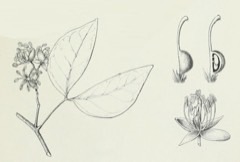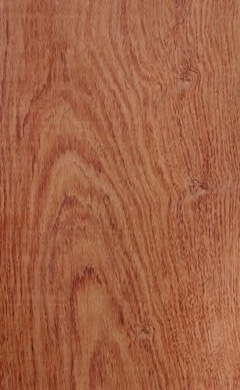 |
|
edibleplants.org |
 |
| wikimedia.org Paul venter |
Translate this page:
Summary
Physical Characteristics

 Guibourtia coleosperma is an evergreen Tree growing to 20 m (65ft) by 20 m (65ft) at a slow rate.
Guibourtia coleosperma is an evergreen Tree growing to 20 m (65ft) by 20 m (65ft) at a slow rate.
See above for USDA hardiness. It is hardy to UK zone 10. The flowers are pollinated by Insects.
Suitable for: light (sandy) and medium (loamy) soils, prefers well-drained soil and can grow in nutritionally poor soil. Suitable pH: mildly acid and neutral soils and can grow in very acid soils.
It cannot grow in the shade. It prefers moist soil.
UK Hardiness Map
US Hardiness Map
Synonyms
Copaiba coleosperma (Benth.) Kuntze Copaifera coleosperma Benth. Copaiva coleosperma (Benth.) Britton
Plant Habitats
Edible Uses
Edible Parts: Fruit Seed
Edible Uses:
Seed - cooked[775 ]. Traditionally, they are baked in hot ashes and then pounded - although they can be eaten at this stage, it is more common to mix them with water to form a paste and then cook them again[775 ]. Fruit - cooked[775 ]. The fruit (actually a fleshy aril) is easily removed from the seed by soaking for a few minutes in warm water. The arils are used to make a soup[775 ].
References More on Edible Uses
Medicinal Uses
Plants For A Future can not take any responsibility for any adverse effects from the use of plants. Always seek advice from a professional before using a plant medicinally.
The bark is valued for the treatment of skin ailments and wound healing. It is normally pounded and then applied as a paste to the affected area[775 ].
References More on Medicinal Uses
The Bookshop: Edible Plant Books
Our Latest books on Perennial Plants For Food Forests and Permaculture Gardens in paperback or digital formats.

Edible Tropical Plants
Food Forest Plants for Hotter Conditions: 250+ Plants For Tropical Food Forests & Permaculture Gardens.
More

Edible Temperate Plants
Plants for Your Food Forest: 500 Plants for Temperate Food Forests & Permaculture Gardens.
More

More Books
PFAF have eight books available in paperback and digital formats. Browse the shop for more information.
Shop Now
Other Uses
The reddish-pink heartwood is attractive and fine-grained. The wood is hard and heavy and is used for furniture, knife handles and for various other purposes[663 , 775 ].
Special Uses
Carbon Farming
References More on Other Uses
Cultivation details
Management: Standard Staple Crop: Protein-oil Wild Staple Crop
Found in the wild almost exclusively on deep sandy soils[663 ]. Although many species within the family Fabaceae have a symbiotic relationship with soil bacteria, this species is said to be devoid of such a relationship and therefore does not fix atmospheric nitrogen[755 ].
Carbon Farming
-
Management: Standard
Plants grow to their standard height. Harvest fruit, seeds, or other products. Non-Destructive management systems.
-
Staple Crop: Protein-oil
(16+ percent protein, 16+ percent oil). Annuals include soybeans, peanuts, sunflower seeds. Perennials include seeds, beans, nuts, and fruits such as almond, Brazil nut, pistachio, walnut, hazel, and safou.
-
Wild Staple Crop
Some wild plants have strong historical or contemporary use. Although they are not cultivated crops, they may be wild-managed.
References Carbon Farming Information and Carbon Sequestration Information
Temperature Converter
Type a value in the Celsius field to convert the value to Fahrenheit:
Fahrenheit:
The PFAF Bookshop
Plants For A Future have a number of books available in paperback and digital form. Book titles include Edible Plants, Edible Perennials, Edible Trees,Edible Shrubs, Woodland Gardening, and Temperate Food Forest Plants. Our new book is Food Forest Plants For Hotter Conditions (Tropical and Sub-Tropical).
Shop Now
Plant Propagation
Seed
Other Names
If available other names are mentioned here
Bastard teak, Bastermopanie, Chivi, Copalwood, False mopani, Manzauri, Mehibi, Mtjibi, Mungengem Mushibi, Musyibi, Mutsauri, Mutsotso, Omushii, Oshi, Rhodesian mahogany, Rhodesian teak, Tsaudi, Tsauri, Umtshibi, Ushibi, Usivi, African rosewood (ambiguous), large false mopane, Rhodesian copalwood, and machibi,
Native Range
AFRICA: Democratic Republic of the Congo, Angola, Zambia, Zimbabwe, Botswana, Namibia
Weed Potential
Right plant wrong place. We are currently updating this section.
Please note that a plant may be invasive in one area but may not in your area so it's worth checking.
None Known
Conservation Status
IUCN Red List of Threatened Plants Status : This taxon has not yet been assessed

Growth: S = slow M = medium F = fast. Soil: L = light (sandy) M = medium H = heavy (clay). pH: A = acid N = neutral B = basic (alkaline). Shade: F = full shade S = semi-shade N = no shade. Moisture: D = dry M = Moist We = wet Wa = water.
Now available:
Food Forest Plants for Mediterranean Conditions
350+ Perennial Plants For Mediterranean and Drier Food Forests and Permaculture Gardens.
[Paperback and eBook]
This is the third in Plants For A Future's series of plant guides for food forests tailored to
specific climate zones. Following volumes on temperate and tropical ecosystems, this book focuses
on species suited to Mediterranean conditions—regions with hot, dry summers and cool, wet winters,
often facing the added challenge of climate change.
Read More
Expert comment
Author
(Benth.) J.Léonard
Botanical References
Links / References
For a list of references used on this page please go here
A special thanks to Ken Fern for some of the information used on this page.
Readers comment
| Add a comment |
|
If you have important information about this plant that may help other users please add a comment or link below. Only comments or links that are felt to be directly relevant to a plant will be included. If you think a comment/link or information contained on this page is inaccurate or misleading we would welcome your feedback at [email protected]. If you have questions about a plant please use the Forum on this website as we do not have the resources to answer questions ourselves.
* Please note: the comments by website users are not necessarily those held by PFAF and may give misleading or inaccurate information.
To leave a comment please Register or login here All comments need to be approved so will not appear immediately.
|
Subject : Guibourtia coleosperma
|
|
|
|